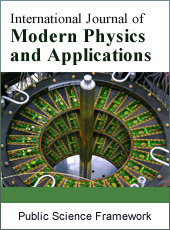International Journal of Modern Physics and Applications
Articles Information
International Journal of Modern Physics and Applications, Vol.1, No.3, Jul. 2015, Pub. Date: Jul. 10, 2015
Application of Laser Induced Breakdown Spectroscopy to Identify the Elements in Sudanese Crude Oil Extracted From Balila Oil Field
Pages: 73-76 Views: 5356 Downloads: 1500
[01]
Nafie A. Almuslet, Department of Laser Systems, Institute of Laser, Sudan University of Science and Technology, Khartoum, Republic of Sudan.
[02]
Saifeldin Yassin Mohamed, Department of Laser Systems, Institute of Laser, Sudan University of Science and Technology, Khartoum, Republic of Sudan.
Laser Induced Breakdown Spectroscopy (LIBS) has been used to identify the constituents and the differences between crude oil samples. The radiation emitted from the plasma of the samples, due to the breakdown, was used to identify the samples contents. An exhaustive analysis of two crude oil samples collected from Balela Oilfield, south of Republic of the Sudan (Balela 1, Balela 2) was performed. Characteristics elements in petroleum such as C, H, N, and O, were detected. The spectra due to heavy elements in crude oil samples such as Ca (II), Ca(I), N(I) were recorded using this technique. The use of intensity ratios of line and band emissions in the crude oil samples allowed a better characterization. Although significant differences were observed, no structural identification of the hydrocarbons components has been obtained. Using laser technology in the oil industry can make a real addition because of its benefits, (e.g. real time, precision, sensitive, selective and fast technology).
Laser Spectroscopy, LIBS, Balila Crude Oil, Sudanese Oil, Laser in Oil Industry
[01]
Borgund, A. E. (2007) Crude oil components with affinity for gas hydrates in petroleum production, Ph. D. thesis, Department of Chemistry and Centre for Integrated Petroleum Research, University of Bergen, Norway.
[02]
Celis, E. M. et al. (2008) Laser induced breakdown spectroscopy as a tool for discrimination of glass for forensic applications, in “Analytical and Bioanalytical Chemistry”, 391, pp. 1961–1968.
[03]
Fahim, M. N. et al. (2010) Fundamentals of petroleum Refining, 1st ed, Elsevier Science & Technology, Netherlands.
[04]
Fortes, F. J. et al. (2010) Spectrochemical study for the in situ detection of oil spill residues using laser-induced breakdown spectroscopy, in “Analytica Chimica Acta” 683, pp. 52–57.
[05]
Gondal, M. A. et al. (2006) Detection of Heavy Metals in Arabian Crude Oil Residue using Laser Induced Breakdown Spectroscopy, in “Talanta”, 69, pp. 1072-1078.
[06]
Hussain, T. and Gondal M. A. (2008)Monitoring and assessment of toxic metals in Gulf War oil spill contaminated soil using laser-induced breakdown spectroscopy, in “Environmental Monitoring and Assessment”, 136, pp. 391–399.
[07]
Miziolek, A. W. et al. (2006) Laser Induced Breakdown Spectroscopy, Cambridge University Press, New York.
[08]
Speight, J. G. (2008) Synthetic Fuels Handbook: Properties, Process and Performance, McGraw Hill, USA.
[09]
Rai, S. et al. (2011) Characterization of organic materials by LIBS for exploration of correlation between molecular and elemental LIBS signals, AIP Advances, India.
[10]
Speight, J.G. (2007) The Chemistry and Technology of Petroleum, 4th edition, McGraw Hill, USA.
[11]
Yang G. (2012) Laser ablation in liquids, Stanford publications, USA

ISSN Print: 2381-6945
ISSN Online: 2381-6953
Current Issue:
Vol. 7, Issue 1, March Submit a Manuscript Join Editorial Board Join Reviewer Team
ISSN Online: 2381-6953
Current Issue:
Vol. 7, Issue 1, March Submit a Manuscript Join Editorial Board Join Reviewer Team
| About This Journal |
| All Issues |
| Open Access |
| Indexing |
| Payment Information |
| Author Guidelines |
| Review Process |
| Publication Ethics |
| Editorial Board |
| Peer Reviewers |


